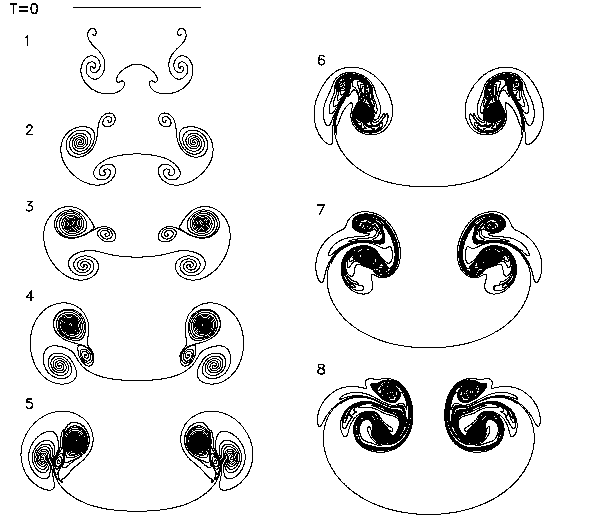airplane wake
The wake behind an airplane
can be modeled as an evolving vortex sheet,
where time represents distance behind the trailing edge.
Initially,
three spiral vortices form on each side of the wake
due to non-uniform loading produced by
the wing tips, the fuselage and the flaps.
For early times,
the motion can be understood in terms of simple
vortex dynamics:
two like-signed vortices rotate around one another,
and
two opposite-signed vortices propagate in space.
Later in time,
more complex interactions occur.

Close-up:
References
Draghicescu, C. & Draghicescu, M.
(1994)
A fast algorithm for vortex blob interactions,
J. Comp. Phys. 116, 69-78
Krasny, R.
(1987)
Computation of vortex sheet roll-up in the Trefftz plane,
J. Fluid Mech. 184, 123-155
